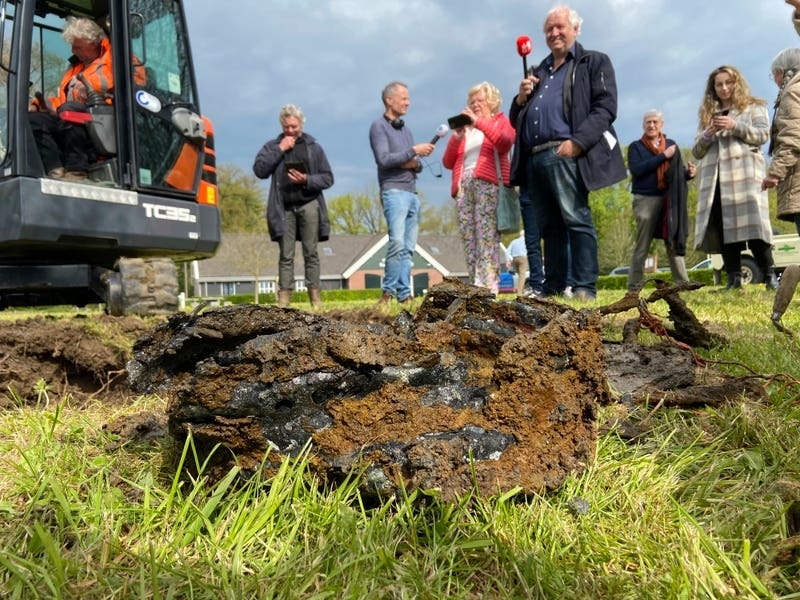An officially sanctioned hunt for a stash of precious jewellery looted by the Nazis during the Second World War and purportedly buried in a sleepy Dutch village has – like many previous searches – failed to unearth any treasure.
Archaeologists and historians in the village of Ommeren, about 50 miles south-east of Amsterdam, pushed a detection device called a magnetometer along a row of fruit trees and across a field on Monday morning and used a mechanical digger to excavate holes in the soggy soil.
They were rewarded with little more than a Second World War-era bullet, some twisted scrap metal, a crumpled car wheel and muddy boots.
Municipal officials hope that the failure of the team – that included members of a local historical society and university archaeologists – to find treasure will put an end to amateur sleuths visiting the village.
“I think there’s minimal chance of finding anything. We dug three holes here of places where we could find through the magnetometer. There was a signal, and none of these holes have found the treasure,” said archaeologist Martijn Bink. “So I think this is all what we’ll do. We won’t go any further.”

The appearance of the map sparked a modern-day treasure hunt, with prospectors using metal detectors digging up sites around Ommeren despite a ban.
“A lot of people came digging here… without permission. Caused a lot of inconvenience for the residents,” said Pieter Neven of Buren municipality.
The treasure hunts began after the Dutch National Archive published a mountain of documents – as it does at the start of each year – including the map, which swiftly went viral.
“We’re quite astonished about the story itself. But the attention it’s getting… as well,” National Archive researcher Annet Waalkens said in January.
She said the story started in the summer of 1944 in the Nazi-occupied city of Arnhem – made famous by the star-studded movie A Bridge Too Far – when a bomb smashed a bank vault, scattering gold, jewellery and cash across a street.
German forces scooped up as much of the loot as they could and kept it in ammunition boxes, she said, citing an account by a German soldier interviewed by Dutch authorities after the war.
As the Germans were pushed back by an Allied advance, they buried the ammunition boxes in Ommeren, according to the soldier’s account.
Dutch authorities recovered the map and searched Ommeren shortly after the war without finding anything. Then the scent went cold until publication of the map triggered the January hunt.
Monday’s archaeological efforts also dug up nothing and may have buried the last hope of recovering the loot.






